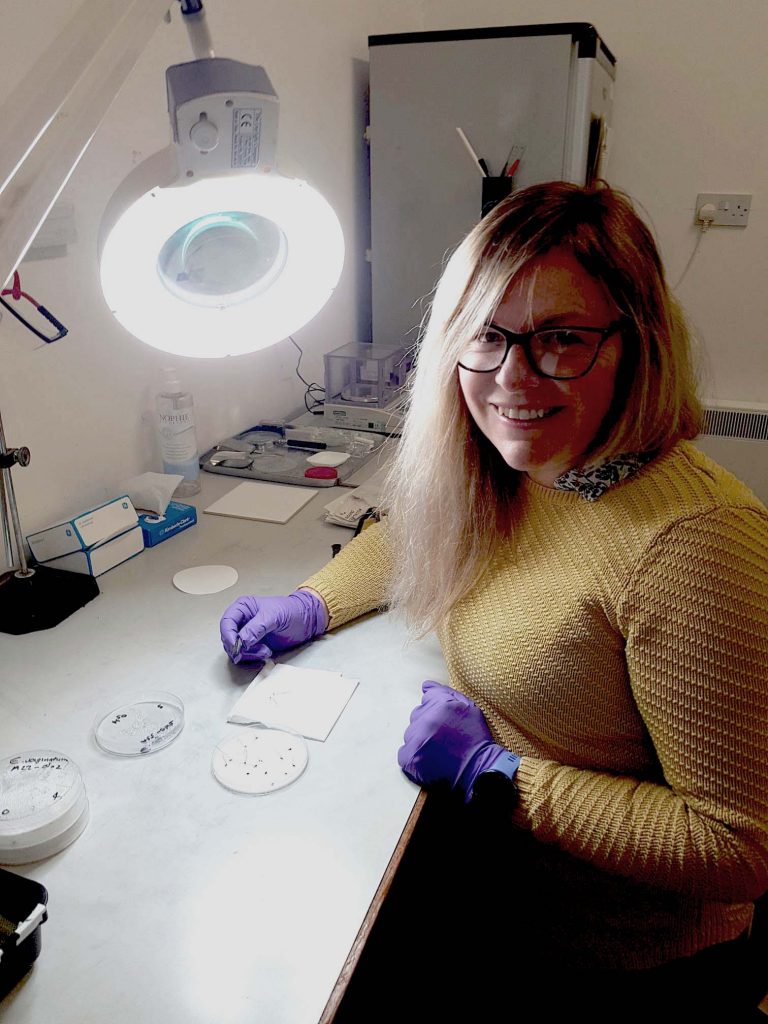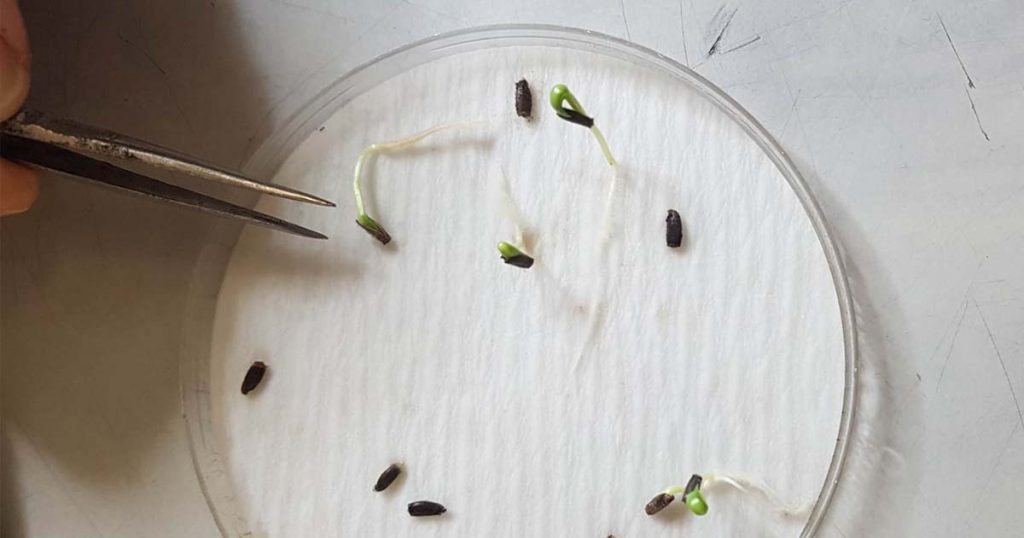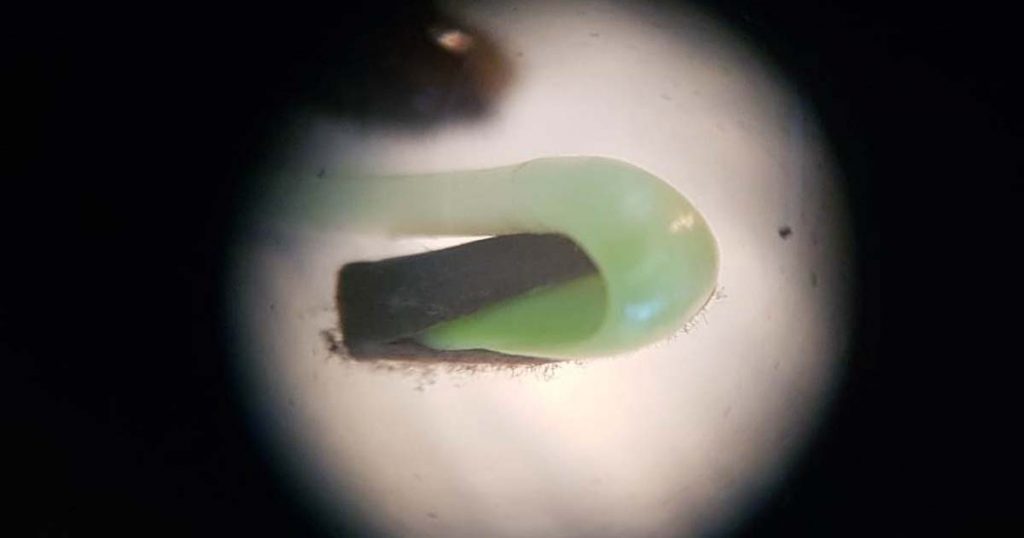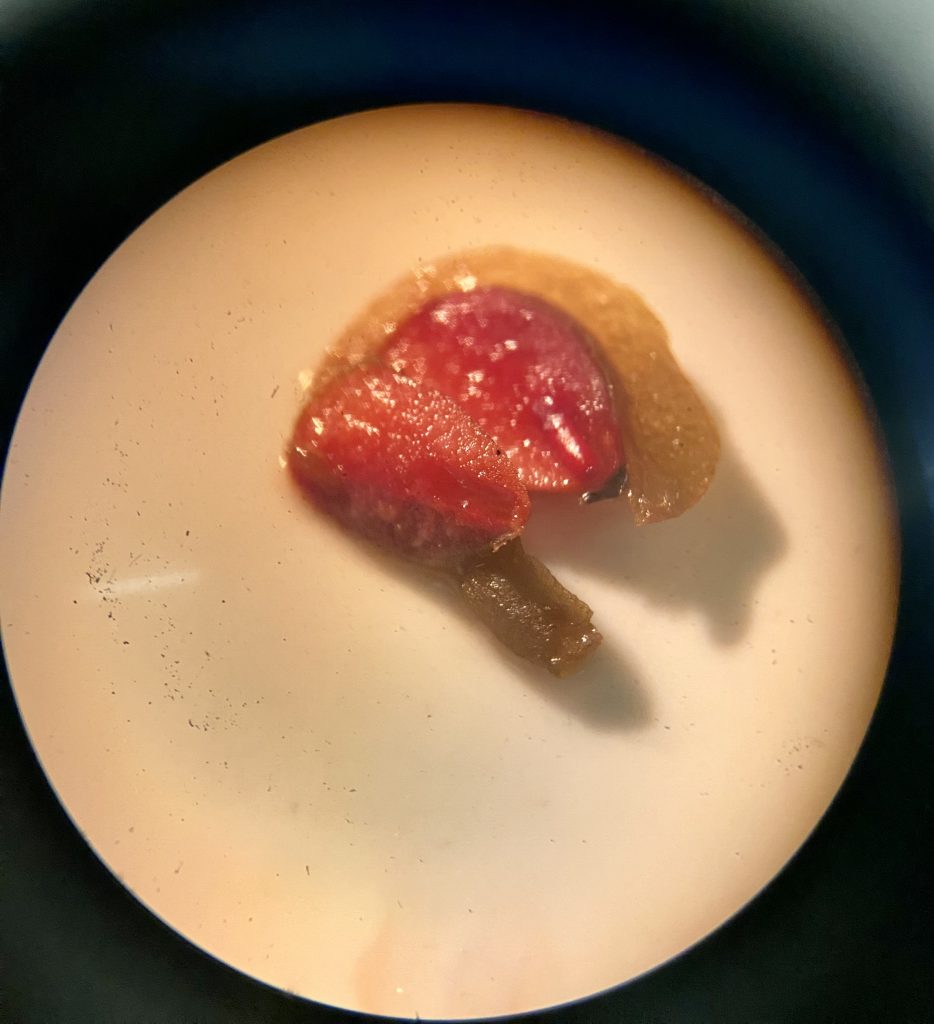
After cleaning, the next part of our wildflower seed’s journey is seed testing. In the laboratory at Mavisbank our colleague Natasha tests seed of our 200 hundred odd species and, just as Jill has different methods of seed cleaning, Natasha chooses the right seed test for the right wildflower species. As well as providing germination testing to check the quality of our harvested seed lots, this knowledge of the first stages of native wildflower plants life helps us to grow them here at Mavisbank and to advise you on how you can grow them.
Here Natasha is testing Greater Knapweed (Centaurea scabiosa) seed. Within a week it was clear that already about 50% from her sample had germinated as she could see a radicle (the embryonic root that emerges from the seed). As Natasha spots these signs that the seed is alive and can grow, she counts the sprouting seeds and then takes them out of the dish. She will continue to count new growing seeds over the weeks as the radicles appear and then work out a percentage of seed that can germinate from her sample.

When carrying out a test, sometimes all that is needed is a dampened filter paper in a petri dish for wildflowers such as with Yarrow (Achillea millefolium) and Ox-eye Daisy (Leucanthemum vulgare). Natasha places a number of seeds on the dish and then leaves it in the incubator for 4 to 12 weeks depending on the species. The seed of some wildflowers, like the Greater Knapweed, will have germinated before then although some, like Bluebell (Hyacinthoides non-scripta) would not be expected to reach full germination before 12 weeks.

Many wildflower seeds are a bit more complicated to test and to be able to see this stage of their life; just getting over the first hurdle of germination, Natasha has to overcome some basic strategies of seed dormancy the plant might have which helps it in the wild.
One strategy for some seeds is to have a hard seed coat protecting them from predation or pathogens like fungi. Many geranium species, cranesbills like Meadow, Bloody and Wood Cranesbill, have to be lightly chipped (scarified) with a scalpel by Natasha before she can test them. If a seed was planted to grow the seed coat would soften over time without any intervention by being in the soil or compost. If you want to speed up the process at home you could put these seeds between sheets of fine sandpaper and rub them gently before planting
To start their germination some other plants require a long period of cold, some an alternate period of warmer and colder temperatures. A warming environment with increasing light can be a good sign for a plant that the conditions it needs to grow are available – often this means spring is here! In the lab Natasha tricks some seed into germination by chilling (stratifying) them for a period to create winter conditions, or for others, chilling and gently warming them as well as providing light in the incubator.

Instead of a germination test Natasha can use a tetrazolium test on some species – this involves soaking the seed in water and then adding the ‘TZ’ which will stain the live parts of the seed red. When the seed is cut open the living or dead cells can be told apart and so an assessment made of whether the seed is alive. Unlike germination testing this takes only a day or so but it has its limitations. Cutting open a relatively large seed like Yellow Rattle (Rhinanthus minor) at 1-1.5mm in diameter and then seeing what it looks like under a microscope is possible, but it is much more difficult to do this with a species like Heather (Calluna vulgaris) with seeds so small they are almost like dust.
For new species Natasha uses her own experience for choosing her method or developing protocols, sometimes with the help of useful tools like the Seed Information Database (now hosted by the Society for Ecological Restoration).
Seeing how different seed lots of the same species behave can pose questions for Natasha and all of us here about factors like weather conditions during growth and harvest or how the seed is treated during cleaning and storage. The seed habits of some species take time to discover – some germinate in the field (and in pots) but not ‘on the plate’, reminding us that wild plants have a wide range of strategies and interactions that help them grow in their wild community and natural habitat.
